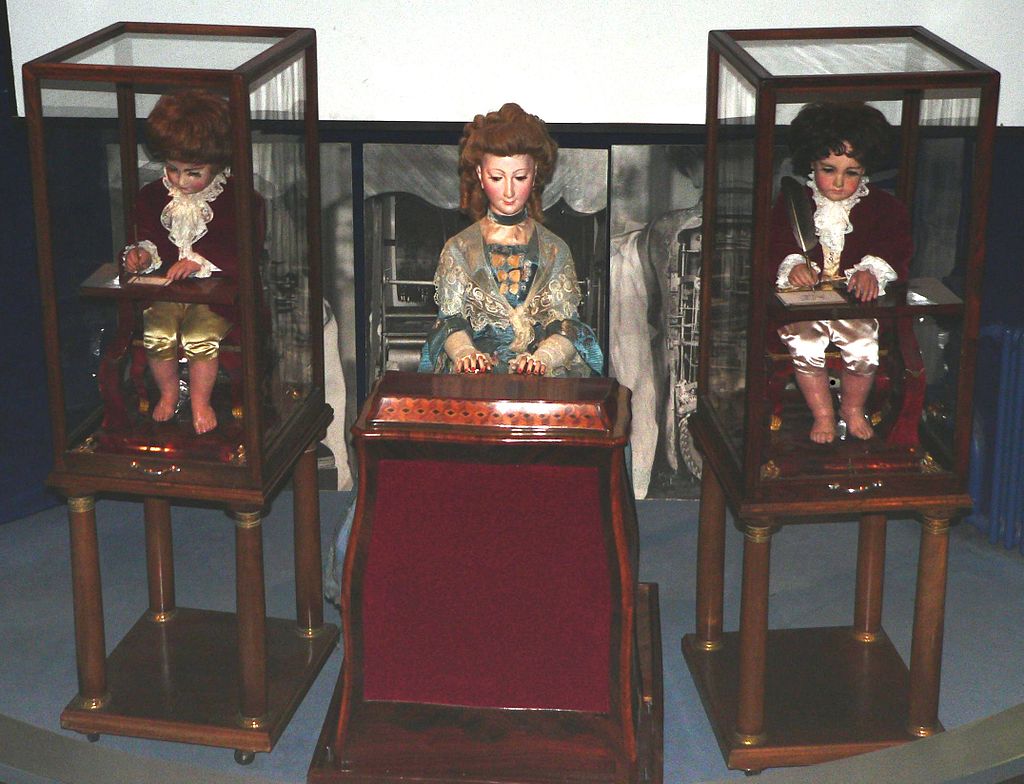Astonishing Windup Robots Still Work, Centuries Later
New science discoveries prompted our ancestors to ask, how much can we make them do?Eighteenth-century Swiss watchmaker Pierre Jaquet-Droz (1721–1790) produced many fine watches but he is remembered today for his workshop’s “humanoid automata” or robots, the Draftsman,
the Musician, and the Writer, produced between 1769 and 1774. Presented in fashionable venues throughout Europe, they were distinguished by the miniaturization and complexity of their internal mechanisms, which enabled remarkable versatility:

The Writer has written thousands of notes, using a goose quill pen that he dips in an ink well, then shakes his hand slightly to avoid spots of ink on the paper, before demonstrating his fluid and elegant penmanship as his eyes follow the text. He sits at a Louis-XV mahogany desk, wearing elegant period clothing which disguise a hidden door to his back that reveals a 6000-piece mechanism, computing his ability to trace the letters of the alphabet…
In order to write any words, letter by letter over four lines, it uses an extraordinary system of 40 rotating cams that essentially work like a Read-only (ROM) data storage, mainly still used to store firmware or application software on computers today. The wheel controlling the cams inside the doll is a programming system disk made up of letters that can be removed, replaced and re-ordered to make any word or any sentence, allowing this 250-year old writer, to be programmed like a robot.
MESSYNESSY, “THE BOY ROBOT OF 1774” at Co-Design.blog
Like the watches of the day, the Jaquet-Droz automata were powered by a crank that winds up the springs. Maintained in working condition at the Museum of Art and History of Neuchâtel, they still fascinate museum visitors today.
While Jaquet-Droz’s workshop surely produced some of the most elaborate robots in the Western world, the contemporary chess-playing Mechanical Turk may be closer to our modern idea of artificial intelligence. It could allegedly ponder moves. In reality, the Turk was an instance of “artificial” artificial intelligence; there was a human chess player hidden inside. During the same time period, Japanese craft workers were creating clockwork-inspired automata such as the tea server as well.
Science discoveries over several centuries had meant that more and more aspects of life were no longer a black box. The question naturally arose, how much can we make non-life imitate life? According to curators at the Museum of Mechanical Art and Design, “By the 17th Century, people were fast becoming fascinated by mechanism, especially those which could imitate living beings. Attempts to mimic life by mechanical means were becoming seen more and more as the years went on.” That included a mechanical “digesting duck.”
Exploration and discoveries continued but automata faded in cultural importance in the nineteenth century for a number of reasons; possibly, the development of machinery powered by fuel meant that other methods offered many more possibilities.
In a curious footnote to the story, Jaquet-Droz’s business fell on hard times around the time of his death in 1790. But after two centuries of dormancy was bought by the Swatch group, which started producing elaborate craft watches in Jaquet-Droz’s home town in 2010, maintaining his legacy.
See also: Why are robots part of religion in Japan? Declining population is only one factor. Ancient cultural beliefs are another.
and
“Artificial” artificial intelligence What happens when AI needs a human I? (Jonathan Bartlett)
